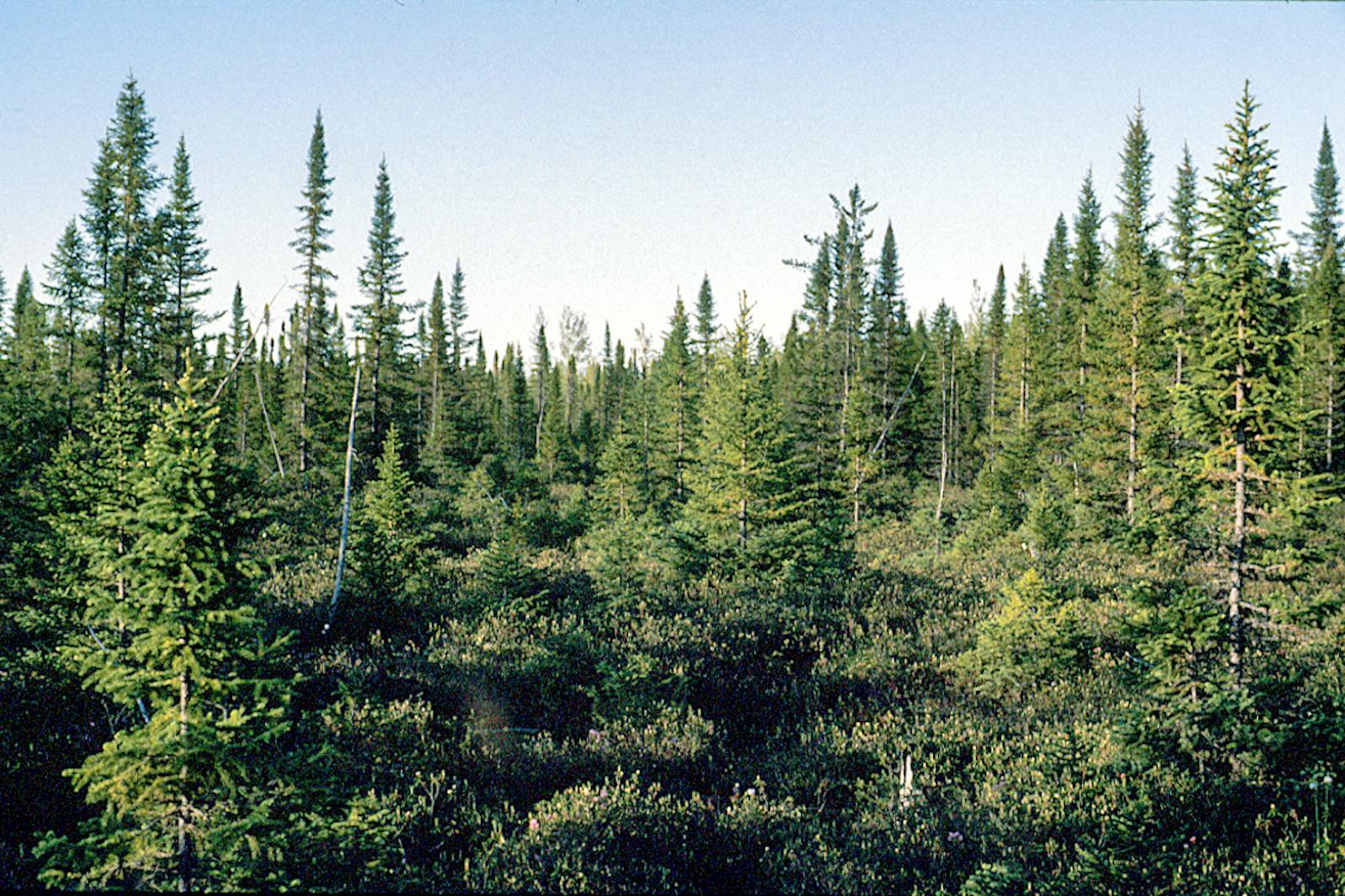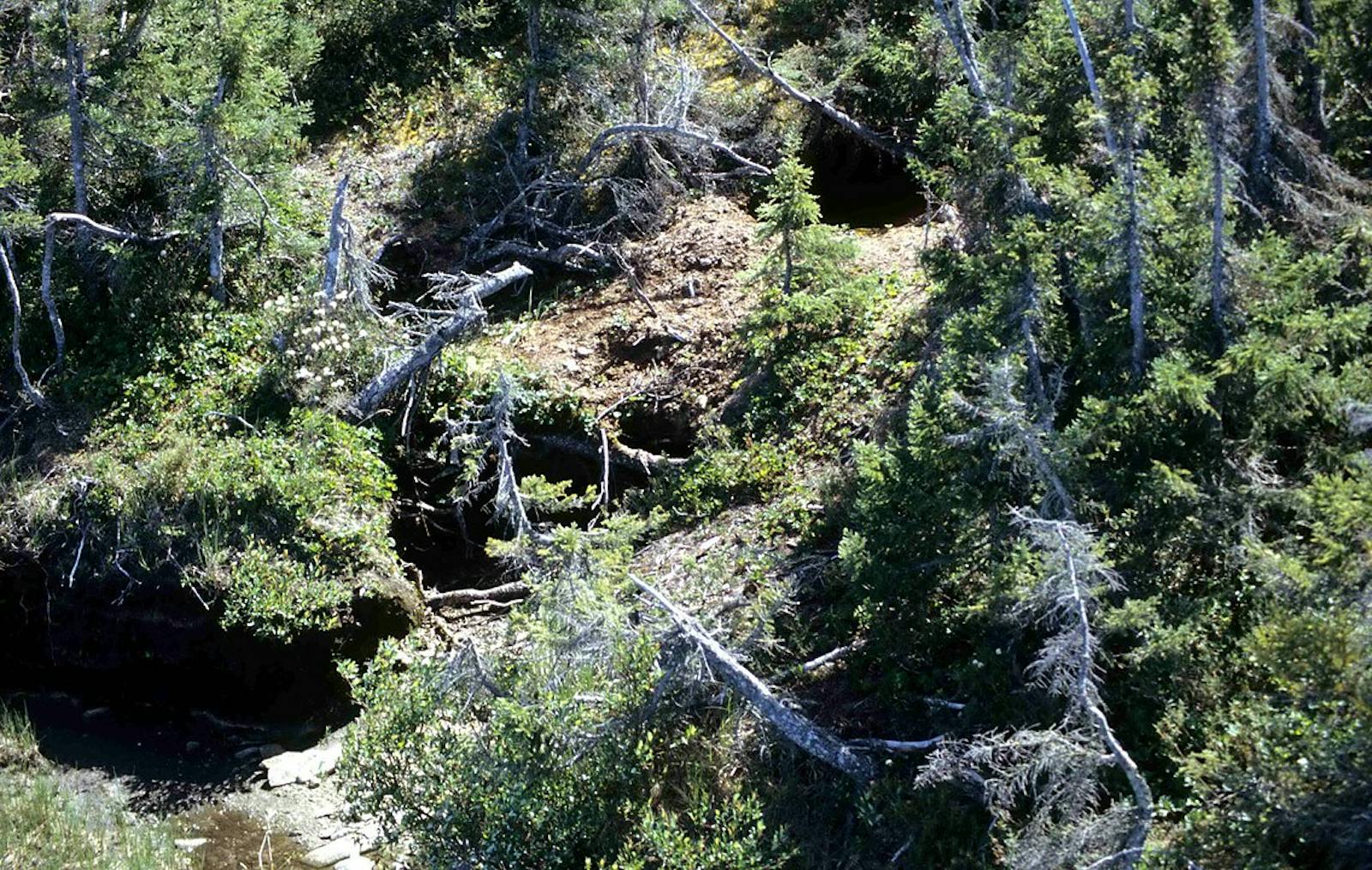Southern Hudson Bay Taiga
The ecoregion’s land area is provided in units of 1,000 hectares. The conservation target is the Global Safety Net (GSN1) area for the given ecoregion. The protection level indicates the percentage of the GSN goal that is currently protected on a scale of 0-10. N/A means data is not available at this time.
Bioregion: Canadian Shield & Coastal Taiga-Forests (NA9)
Realm: Subarctic America
Ecoregion Size (1000 ha):
37,256
Ecoregion ID:
382
Conservation Target:
99%
Protection Level:
1
States: Canada: QC, ON, MB
The Southern Hudson Bay Taiga ecoregion is one of the largest expanses of intact wilderness in the world. It wraps around the southern and western portion of James Bay and Hudson Bay, with 83% of the ecoregion in northern Ontario and the remainder in adjacent Quebec and Manitoba. This ecoregion encompasses the Hudson Bay Lowland(s), the most extensive wetland complex in North America and the third largest on Earth.
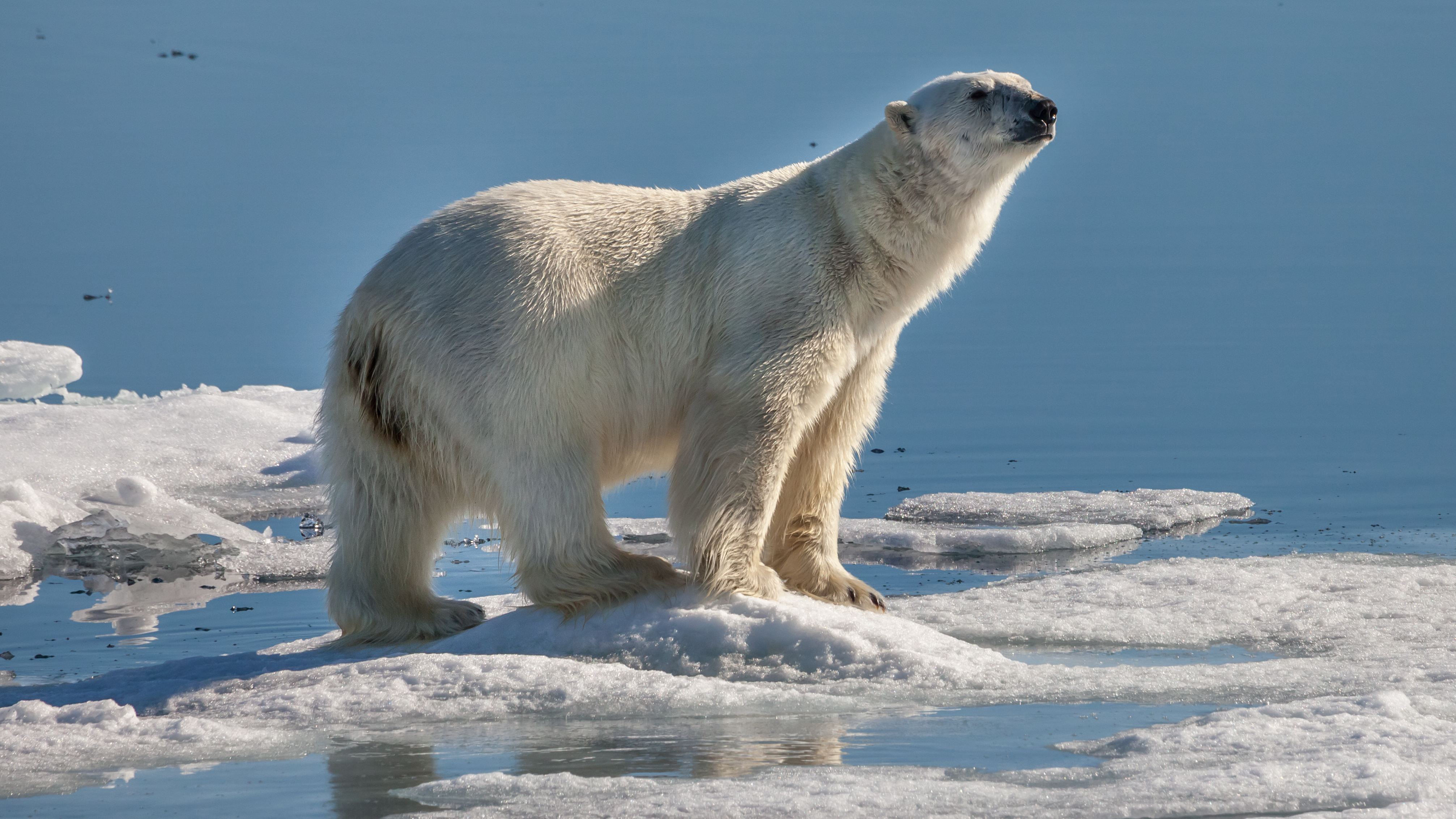
The flagship species of the Southern Hudson Bay Taiga ecoregion is the Polar bear. Image credit: Creative Commons
The Lowland is a vast, mostly flat landscape of Paleozoic limestone bedrock sandwiched between the ancient Canadian Shield and Hudson/James Bay, an extension of the Arctic Ocean. An outlier of the Canadian Shield, the Sutton Ridges project above the plain inland from Polar Bear Provincial Park, where Hudson Bay becomes James Bay.
The Ontario portion of this ecoregion is more than 85% mineral wetland or organic peatland, containing one of the world’s largest accumulations of peat, which serves as a huge carbon sink. Many wide, slow-moving rivers run through this landscape on their way to Hudson and James Bays. The rate of post-glacial rebound (a rise in the land surface after retreat of the heavy ice sheets) in this region is the highest in North America and among the highest in the world, creating a rapidly emerging shoreline with up to 1.2 meters of vertical increase per century over the last 1000 years and expected to continue for thousands of years.

Yellow rail. Image credit: Dominic Sherry, Creative Commons
Given the flat topography, this rebound creates expanses of newly exposed beaches along the bays some 1-2 kilometers wide, bordered by belts of raised former beaches. Coastal areas are occupied by tundra in the north and coastal fens, intertidal marshes, and other communities in the south.
The climate of this ecoregion ranges from high-boreal around James Bay to low to high subarctic through most of the Hudson Bay Lowland. Summers are mostly cool (but with surprising, brief heat waves), and winters are very cold. Permafrost ranges from continuous in the north to sporadic and discontinuous and finally only seasonal in the south. The dominant vegetation of the region is a strongly patterned mosaic of coastal wetlands and interior peatlands. Tree cover declines from south to north and toward the coast, with relatively closed and tall forests of black spruce, white spruce, balsam fir, paper birch, quaking aspen, and northern white cedar in the south, as well as large expanses of homogeneous tamarack fens, to stunted and sparse stands of black spruce and tamarack further north.
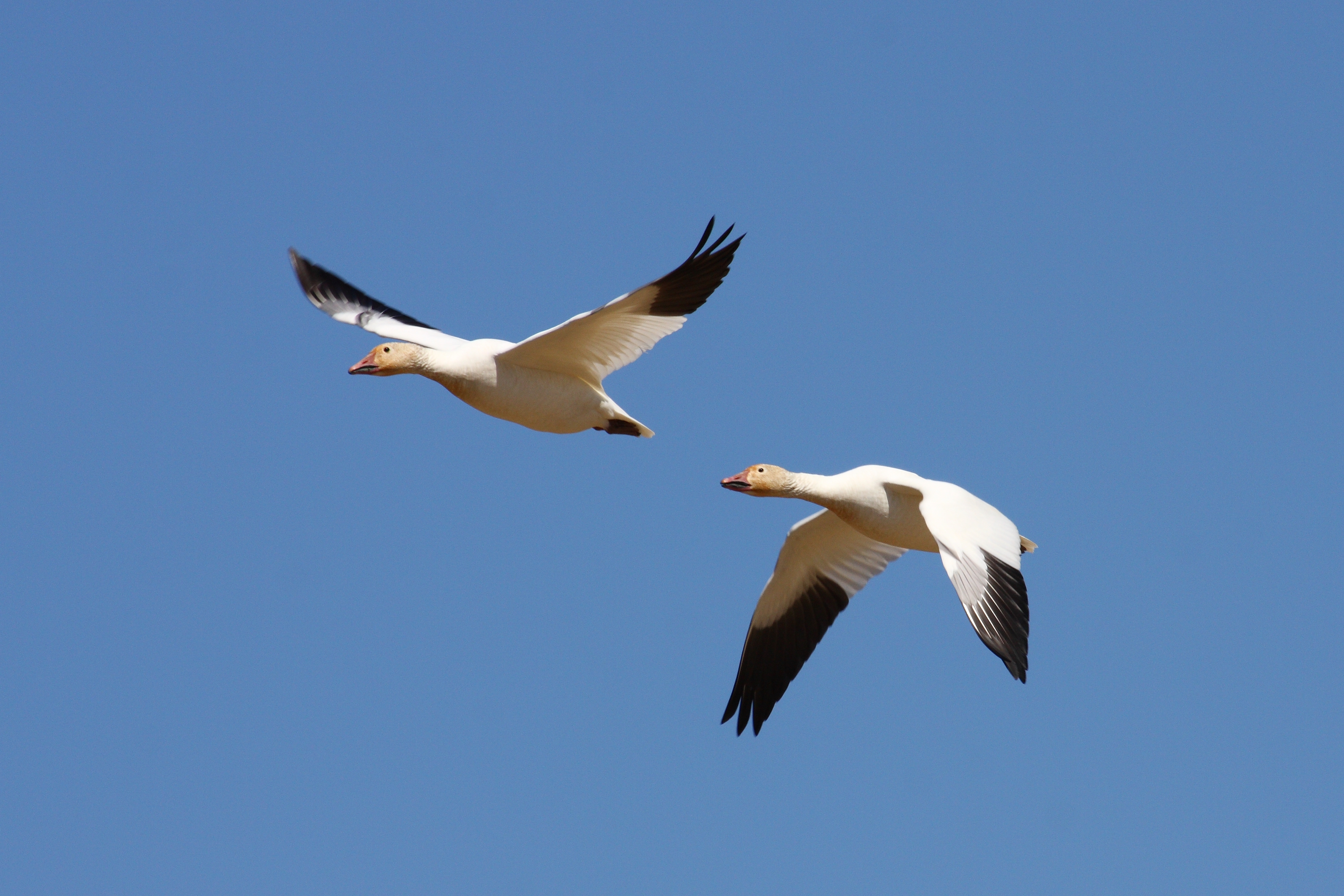
Snow geese in flight. Image credit: Creative Commons
The shrub layer includes dwarf birch, willow, and Labrador tea. Spectacular “string fens” of raised linear shrub fen alternating with flowing water are abundant across much of the region. On natural levees along rivers in the interior, soils are better drained, and trees, including white spruce and balsam poplar, are larger and grow in denser stands. Poorly drained areas support mosses, lichens, and sedges, and raised beaches closer to the coast support a linear pattern of ridges covered with black spruce alternating with depressional bogs and fens. A vague tree-line parallels the Hudson Bay coast around 5–50 or more kilometers inland.
This ecoregion is noteworthy for containing the southernmost population of polar bears in North America, as well as both the boreal forest-associated woodland caribou and the migratory barren-ground caribou associated with tundra. Other mammals include wolf, black bear, and moose in the southern part of the ecoregion. The Lowland is one of the strongholds of boreal birds as well as shorebirds and waterfowl in North America, including large portions of the continental populations of snow goose, brant, and Canada goose.
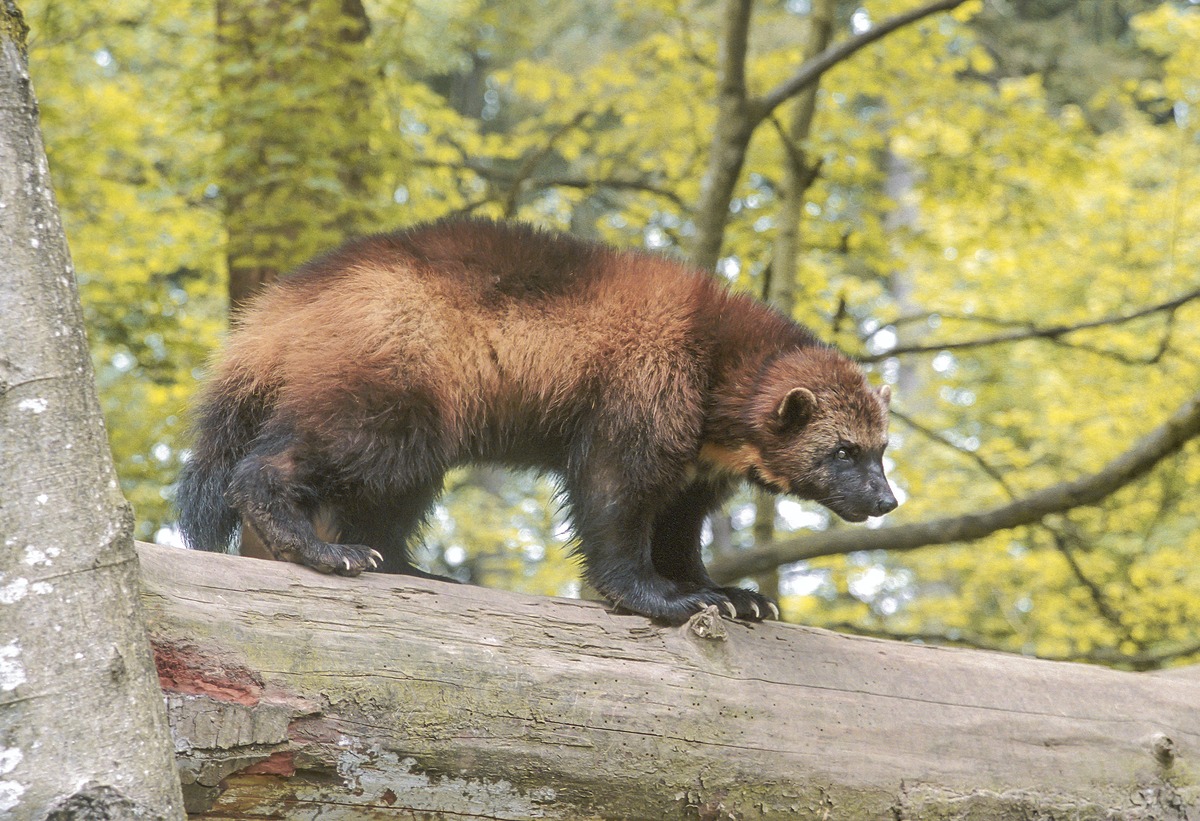
Wolverine. Image credit: Creative Commons
This ecoregion has 11% of its area protected, but the province of Ontario has committed to protecting more than half of the region. Currently approximately 43% of the ecoregion is intact. Threats include proposals for massive peat mining operations, as well as mining for minerals and hydropower development.
Priority conservation actions for the next decade are to: 1) greatly increase federal and provincial designation of conservation lands in order to maintain the intactness of natural vegetation across the ecoregion; 2) continue and expand the current “let it burn” fire policy for most of the ecoregion; and 3) increase protection effort of carnivores, including the polar bears.
Citations
1. Riley, J.L. 2011. Wetlands of the Hudson Bay Lowland: An Ontario Overview. Nature Conservancy of Canada, Toronto, ON.
2. Ricketts, T.H. et al. 1999. Terrestrial Ecoregions of North America: A Conservation Assessment. Island Press, Washington, D.C.
3. Elliott-Fisk, D.L. 2000. The taiga and boreal forest. In M.G. Barbour and W.D. Billings, editors. North American Terrestrial Vegetation, 2nd edition. Cambridge University Press, Cambridge, U.K.
